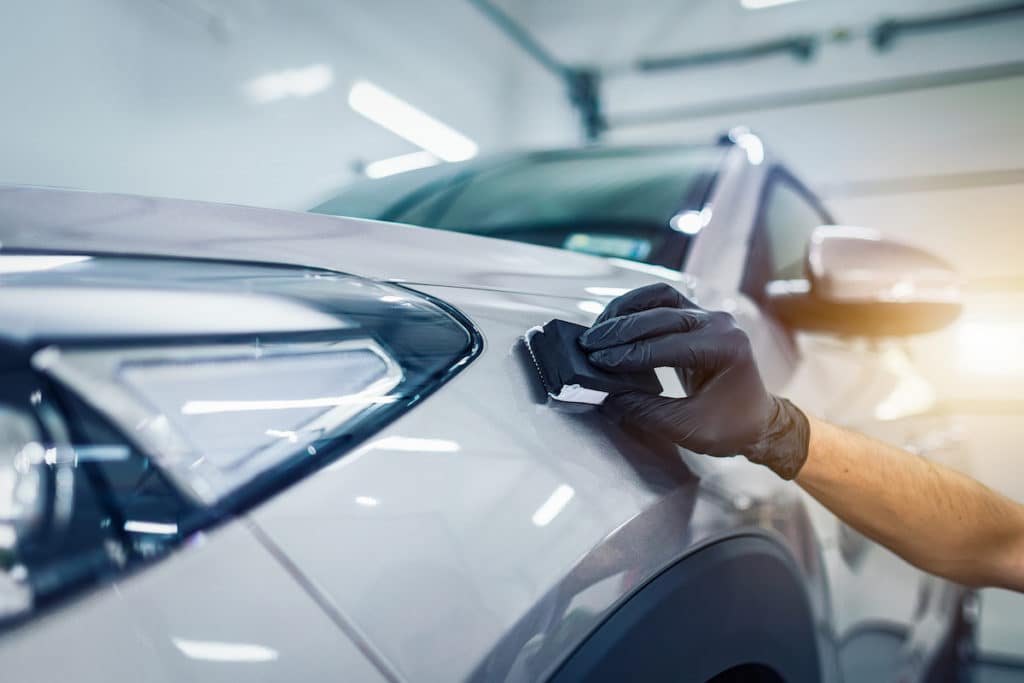Find top-quality paint protection film solutions for impact-resistant car care.
Find top-quality paint protection film solutions for impact-resistant car care.
Blog Article
A Comprehensive Guide to the Types of Ceramic Finish on the Market
Ceramic finishings have become a pivotal remedy across numerous markets because of their one-of-a-kind homes and applications. From silica-based solutions understood for their robustness to crossbreed options that combine numerous benefits, the choices available can be frustrating. Understanding the nuances of each kind, including their certain advantages and ideal usage situations, is crucial for making educated choices. As we check out the distinctive qualities and applications of these finishings, the effects for performance and long life come to be progressively noticeable, questioning concerning which kind could best suit your requirements.
Understanding Ceramic Coatings
Ceramic layers are innovative protective services that have acquired appeal in numerous markets, specifically in auto and aerospace applications. These finishings include a liquid polymer that, when healed, creates a durable, hydrophobic layer on the surface of the substratum. This layer supplies enhanced resistance to environmental pollutants, UV radiation, and chemical exposure, thereby extending the life and visual allure of the underlying product.
The basic part of ceramic coatings is silica, which adds to their hardness and sturdiness. The application process normally entails surface area prep work, application of the finishing, and treating, which can be achieved with warmth or UV light. As soon as treated, ceramic finishes display phenomenal bonding properties, enabling them to stick highly to a selection of surface areas, including metals, plastics, and glass.
In enhancement to their protective functions, ceramic layers likewise supply simplicity of upkeep. Their hydrophobic nature reduces the adherence of dust and crud, making cleansing easier and less regular. Generally, the fostering of ceramic finishings represents a substantial advancement in surface protection modern technology, supplying both useful and aesthetic advantages across several fields.
Types of Ceramic Coatings
Numerous kinds of ceramic layers are available, each made to meet certain efficiency requirements and applications - Paint Protection Film. The most typical kinds include:
Silica-based Coatings: These layers mostly consist of silicon dioxide and are recognized for their durability and chemical resistance. They are commonly utilized in automotive and commercial applications.
Titanium Dioxide Coatings: Renowned for their photocatalytic residential properties, titanium dioxide finishings are usually applied in settings where self-cleaning and antifungal homes are preferable, such as in building materials and automotive coatings.
Zirconia Coatings: Defined by their high-temperature stability and thermal resistance, zirconia coverings are utilized in applications such as turbine engines and high-performance automobile parts.
Alumina Coatings: Showing excellent solidity and thermal security, alumina coatings are often used in wear-resistant applications, consisting of reducing devices and industrial machinery. - Auto Detailing
Crossbreed Coatings: Combining the homes of various materials, crossbreed coverings offer enhanced efficiency qualities, making them ideal for special and demanding applications.
Each kind of ceramic finishing serves unique purposes, permitting users to pick the most appropriate remedy based upon certain environmental conditions and performance demands.
Advantages of Ceramic Coatings
Ceramic finishes, in specific, offer countless advantages that make them increasingly preferred amongst makers and consumers alike. These coatings are resistant to scratches, chemicals, and UV rays, ensuring that the underlying surface stays secured over time.
Along with durability, ceramic coverings give superb hydrophobic residential or commercial properties, enabling for easy cleansing and maintenance. This water-repellent address nature decreases the adherence of dirt, crud, and various other pollutants, which can extend the visual allure and functionality of the surface. Ceramic finishings can considerably improve thermal resistance, making them optimal for applications that withstand high temperatures.

Application Process
When using ceramic coverings, a thorough technique is important to achieve ideal results. A clean surface makes certain appropriate adhesion of the layer.
Once the surface is prepped, the next step is to apply the ceramic layer. The finish ought to be used in slim layers, web as thicker applications can lead to unequal finishes.
After application, the layer needs a particular curing time, typically varying from a couple of hours to a full day, depending on the item. Complying with these steps faithfully will make best use of the performance and durability of the ceramic covering, giving a sturdy protective layer for the surface.
Upkeep and Durability
To ensure the long life and efficiency of a ceramic finishing, regular maintenance is essential. Ceramic coatings, recognized for their toughness and safety qualities, require details care routines to maximize their life expectancy and performance.
Along with routine washing, routine examinations are crucial. Search for indications of wear or damages, such as hydrophobic residential or commercial properties reducing or surface area flaws. If essential, a light gloss might be put on rejuvenate the covering without stripping it away.
Additionally, the application of a booster spray can improve the finishing's hydrophobic impacts and recover its gloss. This is especially helpful for layers that have actually remained in usage for an extensive duration. Inevitably, by sticking to these upkeep methods, one can dramatically expand the life of a ceramic finish, making certain that it remains to provide optimum defense against environmental elements and you could try here maintain the aesthetic charm of the vehicle.
Final thought

Report this page